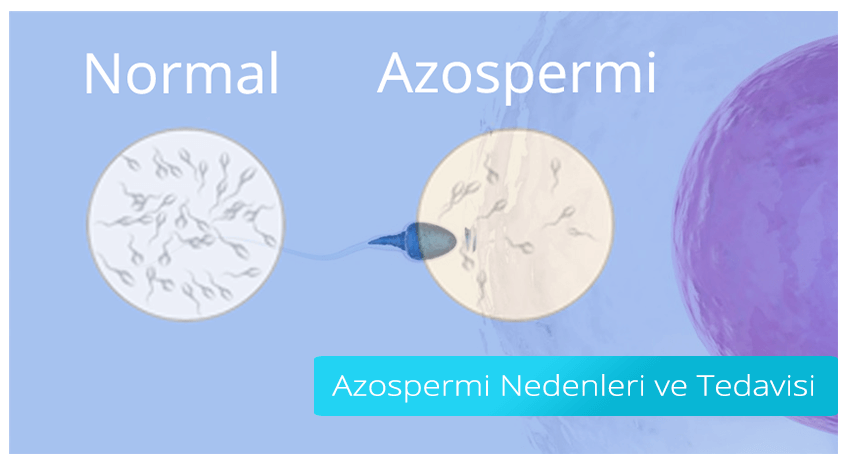Male Infertility Azospermia
The only solution today for children with azoospermia that we cannot treat with medication; Micro TESE operation. Because this way we can obtain sperm from testicular tissues, micro-injection by transferring the eggs of their spouse successfully embryo development and pregnancy can provide.
Patients with azoospermia may also have children.
When we look at the average in general, the success of finding sperm is around 50%. However, for example, in men with undescended testes, those who had undergone testicular lowering before the age of puberty, and if the testicular size is good, we have a chance of finding 65-70% sperm. Even in men who had no chance of chromosome structure disorder in the past, our new sperm retrieval rate increased to averages. Even 47, XXY klinefelter syndrome, so-called men, even with genetic defects in the testicular tissue can find sperm by finding healthy children.
How is Azospermia Treatment Done?
Treatment of azoospermia should first determine the cause of azoospermia. During diagnosis, the patient may be asked for hormone analyzes, blood samples for genetic examinations or radiological examinations (testicular ultrasound). As a result of the completion of all examinations and the examination of the urology doctor, it is decided that the treatment will be performed.
If azoospermia due to obstruction is detected, the obstruction in the canals is opened by surgical operation and sperm is released. After the opening of the channels, pregnancy is expected in a natural way. In the case of azoospermia, which is not due to obstruction, that is, due to production disruption, sperm is collected from the testes or collecting channels by surgery.
The question nasıl How can sperm be obtained in the case of azoospermia? Aras is one of the main questions of the patients.
Micro-TESE method is used to collect sperm. Samples are taken from the selected areas by examining the canal in the testis which can produce sperm by means of an operating microscope.
The micro-TESE allows very small pieces to be removed from the tester, thus increasing the chance of finding a high percentage of sperm.
The experience of the physician performing the micro-TESE operation and how often these operations are performed are extremely important and important issues for the success of sperm finding.
Types of Azoospermia
There are two types of azoospermia. One of these is azoospermia due to obstruction and the other is azospermia due to obstruction. Genital infections or lack of congenital sperm ducts cause this condition.
Azoospermia due to non-obstruction is the absence of sperm in the semen or the production of very few sperm. Approximately 65% of patients with azoospermia are included in this group. Genetic and hormonal disorders can occur due to congenitally high testes and radiation.
Factors Causing Azospermia
Apart from congenital origin of azoospermia, it can be seen later in healthy individuals.

Advanced male age: It becomes difficult for men to have children, especially after 40 years of age. After this age, there is a decrease in testosterone hormone at a rate of about 1.2 per year, resulting in a low sperm production.
Malnutrition: Eating too much and poor quality food, obesity, or, on the contrary, undernutrition, which means eating less calories, can also seriously affect azoospermia.
Environmental Factors: Today, the social environment in which we all are among the factors that affect our sperm production. Nerve, stress, psychological problems, work or familial factors adversely affect azoospermia.
Hormonal: Irregularities in the hormone level are caused by the fact that the desired hormone is not secreted and the hormone is secreted more or less.
Azospermia Treatment İstanbul
It is determined whether the patient who comes to our Istanbul Azospermia Treatment Center is primarily azospermia. This is understood by a method called spermiogram. If no sperm cells are seen after 2-3 spermiograms that are examined every 2 weeks, the diagnosis of azoospermia is made. Afterwards, anterior urology and chromosome evaluation are performed. Because 10-12% of azoospermic cases have structural or numerical chromosomal problems. We also look for breaks in the Y chromosome.
Microscopic TESE method is applied to the diagnosed patients. Microscopic TESE is almost the most successful biopsy method.
Microscopic TESE is a method of examining ovarian tissue under a microscope. After scanning under the microscope, sperm is examined in tissue samples taken from the areas where sperm can be found in the ovary tissue.
In most cases there is sperm. However, in some cases where sperm cannot be found, tissue samples are sent for pathological diagnosis. According to the pathology result, the patient is given a treatment and a microscopic TESE procedure is applied again.
As a result of the microscopic TESE procedure, microinjection is applied with the sperm cells from the testes to perform pregnancy. This method allows pregnancy to occur even if it does not permanently undergo azoospermia.
Is it possible to notice azoospermia in advance?
Of course, semen analysis is necessary to make the diagnosis of azoospermia, but before you have this test, you may encounter a few abnormal disorders in your semen. If your menu has a yellowish, greenish, or even reddish color, or if your menu is much more liquid or darker than normal, if there is an unusual odor in your menu, you should go to a doctor’s check.
Spermiogram
Spermiogram (sperm analysis, sperm analysis, semen analysis, semen analysis) is a test to evaluate the number, shape, movement of sperm.
Sperm Test
The number of sperm, the ratio of normal sperm to abnormally shaped sperm, the amount of sperm with good motility is evaluated.
In addition, the amount, pH, color, presence of leukocytes, amount of fructose and liquefaction are evaluated.
The motility of the sperm is examined at certain times. Classification is made according to movement types. 2-5 days after sexual abstinence.
The sperm sample should be delivered to the laboratory within 1 hour at the latest, preferably the sperm sample should be given in a place close to the laboratory.
For this purpose, infertility centers have allocated an area where you can give sperm samples.
Sperm assessment criteria may vary. Kruger criteria is an evaluation method which takes into account sperm deformities.
After a special staining, the sperm shape (morphology) characteristics can be examined and the fertility capacity of the sperm sample can be obtained.
According to the results of sperm analysis, at least 2 different sperm samples should be examined at intervals of 1-2 months in order to make an ideal decision.
If a fertility problem is detected in the sperm analysis, the man’s physical and hormonal examination is started. The sperm production cycle is repeated every 2-3 months. So a sperm produced will be secreted into the semen after 2-3 months.
In the same way, the harmful factors that the person encounters or the medications used for treatment can affect sperm production within 3 months.
This process should be kept in mind when evaluating semen analysis results.


Add Your Comment